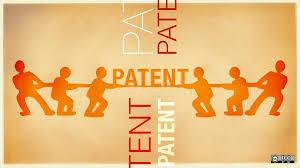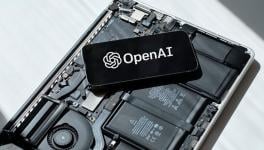New CRI Guidelines: Shutting out Backdoor for Software Patents
Following a series of consultations with various stakeholders, the Indian Patent Office (IPO) has released a fresh set of Guidelines for the Examination of Computer Related Inventions (CRIs) on February 19, 2016. The newly issued Guidelines rolls back the CRI Guidelines first issued in August 2015, which went against the letter and sprit of the Patents Act, and thus created a backdoor for granting of patents to mathematical and business methods, algorithms and software. If allowed to stand, the IPO could have granted patents to a variety of proscribed subject matter – thereby creating additional barriers to innovation.
These Patent Guidelines are important as they prescribe the way in which the Patent Office will scrutinize patent applications – in order to see whether an innovation is fit for patenting or not.
The Indian Patent Act, 1970, in Section 3, lists various artifacts that are not deemed to be inventions and therefore not capable of being granted a patent. Amongst the proscribed inventions are, in sub-section (k), “a mathematical or business method or a computer program per se or algorithm.” For the software industry, this is equivalent to the Section 3(d) of the Patents Act that has greatly helped the Indian pharmaceutical industry and has been held as a model for developing countries. If the section 3(k) is subverted, this will allow a whole range of new technologies to be exposed to spurious patent claims using the software patents. Realising the dangers of such vague and wide ranging software patent claims, the US Courts have rolled back their earlier judgments and have come close the Indian position on software patents.

Image Courtesy: flickr.com
The IPO in its previous 2015 Guidelines had tried to weaken or bypass the 3(k) provisions by claiming that
(a) Stated that if a patent application specifies an apparatus in connection with or a technical process for carrying out a business method or demonstrates a practical application for a mathematical method, it can be considered an invention.
(b) Misinterpreted legislative history of the Patents Act (and section 3(k) in particular) and stated that a patent should not be denied if a claim directed primarily at software also establishes industrial applicability of the invention.
(c) Permitted patents to be granted where a claim showed novel software in combination with known hardware that goes beyond the normal interaction with that hardware and that affects a change in functionality of the hardware.
This interpretation of Section 3(k) basically ignored the fact that in its 2005 amendment to the Patent Act, Parliament specifically rejected proposals to permit software to be patented when industrial or technical application was demonstrated or when in a combination with hardware.
The earlier CRI Guidelines meant is that merely by adding a hardware device onto a new or novel software, the applicant could get a patent that is barred by the Act. Similarly with a mathematical method or business method – mere addition of a hardware component could see a patent granted.
Following opposition by numerous civil society organisations (including the Society for Knowledge Commons, SFLC.in and iSpIRT), the Patents office first withdrew the Guidelines issued in August 2015 and invited public consultations. After public consultations and submissions from a number of organisations including members of academia (such as the IITs in Mumbai and Chennai), the IPO has issued new Guidelines that brings it in line with the Patents Act. Effectively, it has shut out the backdoors that the patent trolling “industry” – those whose primary purpose is suing successful technology companies – wanted to create.
Critically, the Patent Office has accepted the following test for patentability of CRIs:
“(1) Properly construe the claim and identify the actual contribution;
(2) If the contribution lies only in mathematical method, business method or algorithm, deny the claim;
(3) If the contribution lies in the field of computer programme, check whether it is claimed in conjunction with a novel hardware and proceed to other steps to determine patentability with respect to the invention. The computer programme in itself is never patentable. If the contribution lies solely in the computer programme, deny the claim. If the contribution lies in both the computer programme as well as hardware, proceed to other steps of patentability.”
This test will ensure that while genuine innovations are granted patents, the software itself cannot be patented.
Today, it is widely accepted that software patents can actually harm innovation, reduce investment in productive R&D, and can hamper the spread of knowledge. Research has found that not only do software patents restrict technological progress and encourage monopolisation, they massively enhance costs through the creation of patent thickets and through the diversion of funds from productive R&D towards litigationi and discovery/licenses. Scholars Christina Mulligan and Timothy B. Lee estimated that conducting due diligence for new software products, it would cost the U.S. economy $400 billion a year. Others have estimated even higher costs -- $1.5 trillion, equal to 10% of the US GDP -- that exceeds the value-add of the entire information industries, (software, publishing, data processing, telecommunications). Enhancing patent protection for software has only benefited patent trolls who sue innovative companies based on spurious claims: 62% of troll litigation in the US involves software patents. Given that app. developers typically lack the resources to defend against trolls, this basically means a stunting of technical progress and innovation.
The step taken by the IPO in reviewing its August 2015 Guidelines and new ones are vital to support innovation in India and have been widely welcomed by the start-ups, the software industry and organisations such as Free Software Movement of India, iSpIRIT, Software Freedom Law Centre, Knowledge Commons and others.
Disclaimer: The views expressed here are the author's personal views, and do not necessarily represent the views of Newsclick.
Get the latest reports & analysis with people's perspective on Protests, movements & deep analytical videos, discussions of the current affairs in your Telegram app. Subscribe to NewsClick's Telegram channel & get Real-Time updates on stories, as they get published on our website.
























